Knowing what tools you need is a necessary step in learning how to become a DJ. In addition to solid hardware and a creative spirit, any modern disc jockey needs to have DJ software to help run the show. As DJing has risen in popularity, the number of digital DJing programs has also seen a spike. Today, you can find hundreds of DJ programs online, some more feature-rich than others. Of course, if you’re just starting out, you may not know what to look for in DJ software. So, we’ve compiled a selection of the best DJ software available right now, both free and paid. Anyone new to the game can start by downloading one of the free DJ software options before diving into the more advanced paid software. In fact, some of the free programs are just lighter versions of more advanced paid DJ software. Let’s take a look.
Free DJ Software
Below you’ll find the three most popular free DJ programs available for download. While they’re all similar in many ways, each one offers unique features that might make it a better launching point for certain users.
Mixxx (2.0)
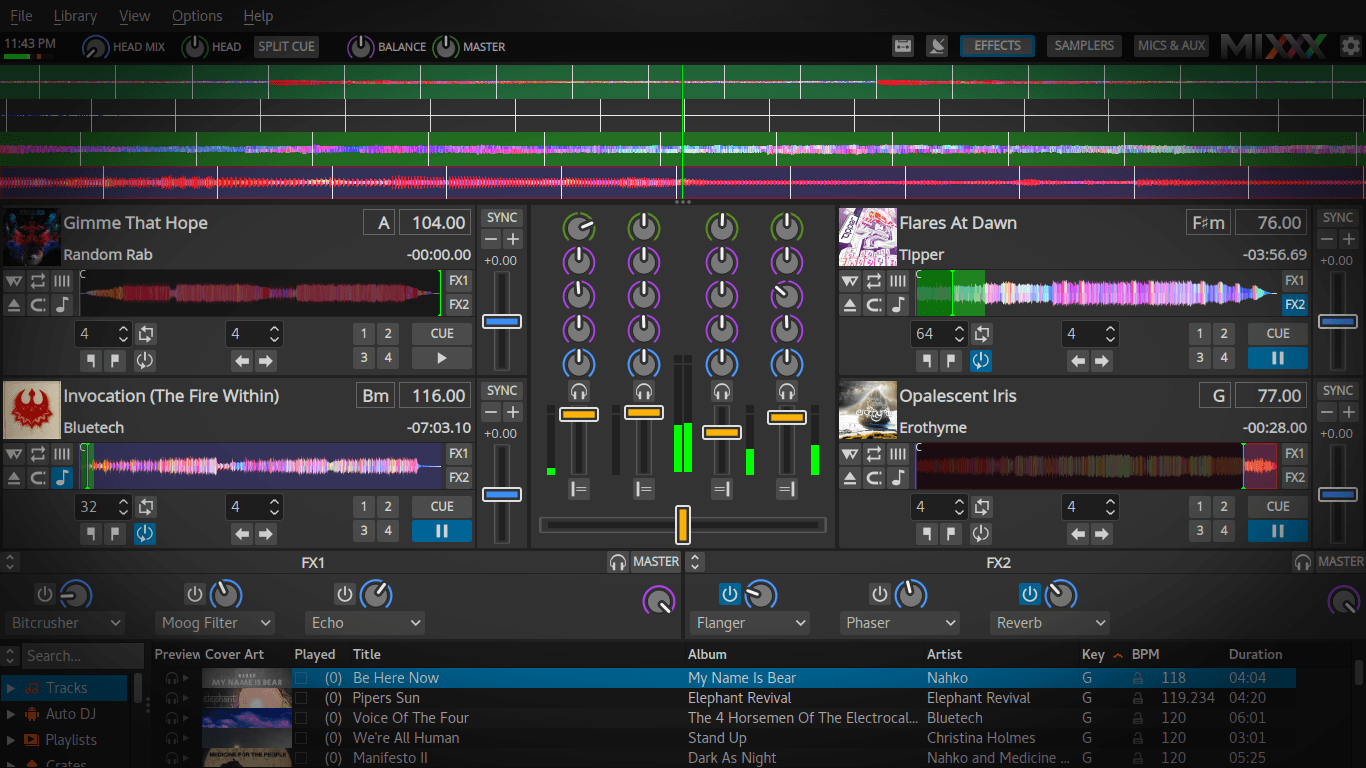
The Mixxx freeware might be the best place to start for any aspiring DJ. This is a completely free and open-source program, meaning the community can work together to alter, improve, and experiment with the source code. Compatible with Windows, Mac, and Linux, Mixxx features all the basics necessary to start DJing. This includes BPM and key detection, sync and quantization, hardware controller and realistic MIDI support, timecode vinyl control, a number of effects, and more. You can also customize the user interface with several skins and color options. Whether you want to record, broadcast, or perform live, Mixxx has you covered at no charge with this free DJ software.
VirtualDJ
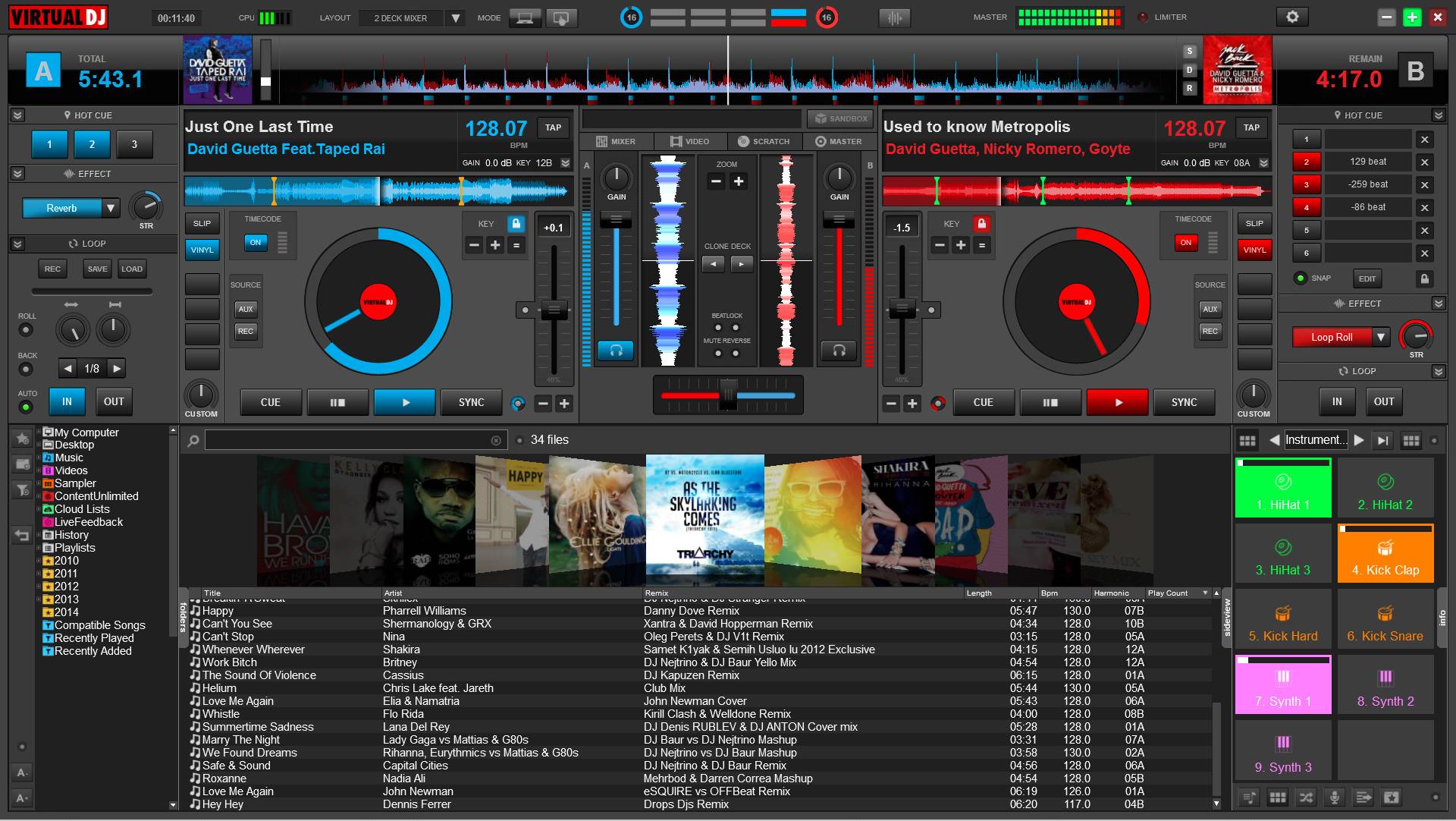
The DJ’s main role is to flood the airwaves with auditory ecstasy. But all performances carry a visual component as well. The surprising sounds that emerge from a DJ’s fingertips are best met with equally stunning imagery. VirtualDJ‘s latest update (2018) offers the tools to deliver a deeply sensory performance that goes beyond the music. In addition to the free DJ software’s vast library of sounds, effects, loops, and pads, VirtualDJ now allows users to integrate their mixes with a video component and light show. The new ScratchDNA add-on offers scratch sequencing and automation. For free DJ software, VirtualDJ offers a ton to play with.
Serato DJ Lite
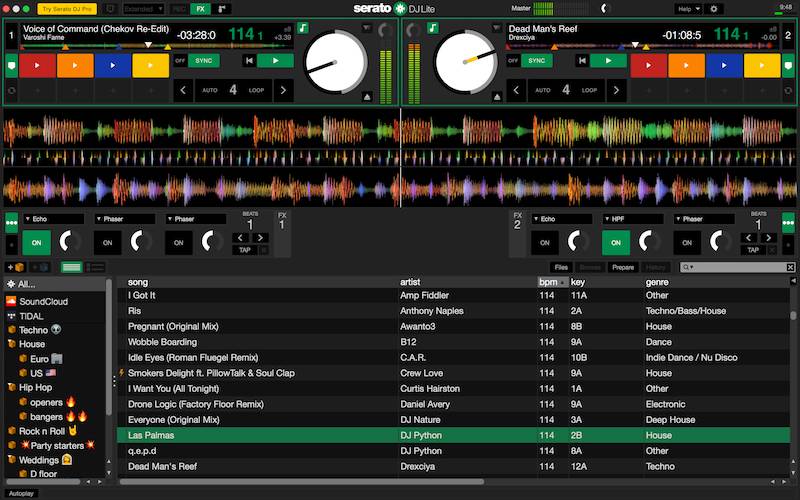
Since 1999, Serato has made a name for itself in the DJing community. Today, the company has created several DJ products ranging from software to hardware. To ease new DJs into the mix, they’ve released a Lite version of their premiere DJ software. Serato DJ Lite gives Mac users the tools they need to learn the basic functions of this digital DJ software. While the program is compatible with external DJ hardware, you can simply mix in the because box](https://www.masteringbox.com/learn/mixing-in-the-box) because it doesn’t require it. Once it’s downloaded, you can start learning right away in Practice Mode. Performance Mode opens up some additional features for hardware integration and more advanced utility, such as sync and song analysis. Serato DJ Lite can be easily upgraded to Serato DJ Pro with a free two-week trial to transition. If you plan on using Serato products in the future, definitely start with DJ Lite.
Paid DJ Software
The five pieces of DJ software listed below are designed with serious hobbyists and professionals in mind. These are the programs to turn to once you’ve become comfortable with this type of DJ software. These products range in cost and compatibility, but they all perform well for any DJ.
Cross DJ by Mixvibes ($49)
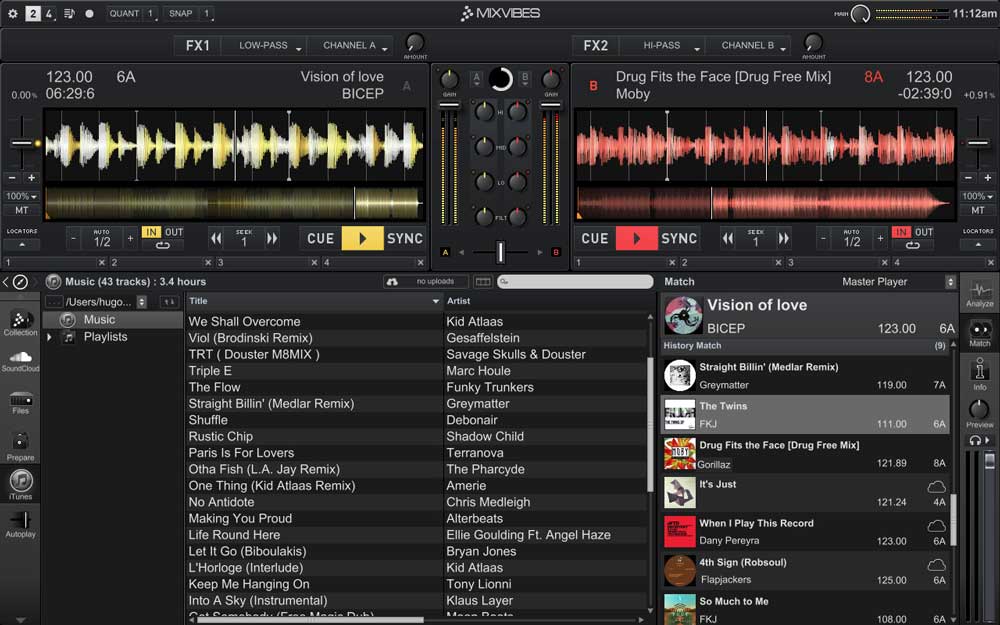
With Cross DJ, Mixvibes presents affordable DJ software for those who know what they want and how to use it. Aptly named, Cross DJ’s greatest strength is its wide range of utility and compatibility. Whether you prefer Mac or PC, laptops, tablets, or your smartphone, Cross DJ works on all of them. Likewise, the software supports more than 80 types of controllers on the market. It even connects to Ableton Link to sync additional apps and plugins. And all this just scratches the surface. Cross DJ’s sprawling features include 8 hot cues or loops per track, a 4-channel mixer with 3-band EQ, snap/quantization, key and tempo detection, and 4 full-featured players, just to name a few. Add to that some extensive video editing and playback features, and it’s no wonder why so many pros use Cross DJ for their performances.
Traktor Pro 3 by Native Instruments ($99)
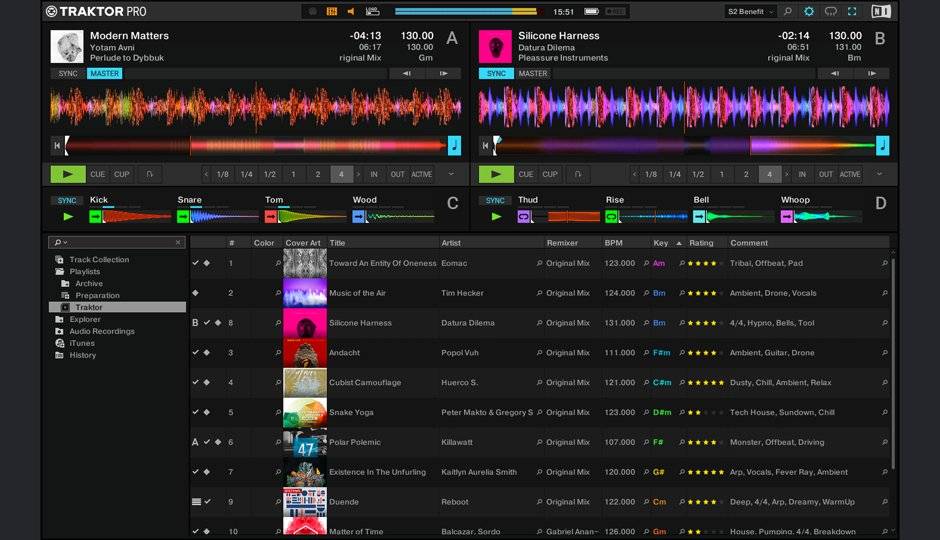
Like Cross DJ, you’ll probably find Traktor Pro 3 on just about every DJ software roundup. Native Instruments is far-reaching in its output of music software and hardware, including hosts of MIDI controllers and plugins. But today, it’s perhaps best known for its premier DJ software. Traktor Pro 3 ticks all the boxes for professional DJing but hides some tricks up its sleeve that make it stand out. Its flux and reverse features can bend and wind music momentarily before syncing it back on track. Traktor’s FX suite opens the door to nearly endless creative possibilities. Best of all, the user interface is completely customizable. But at the base level, its design is sleek and easy to understand for amateurs and professionals alike. Traktor Pro 3 also works with just about any controller imaginable, as well as Ableton Link.
Ableton Live ($99-$749)
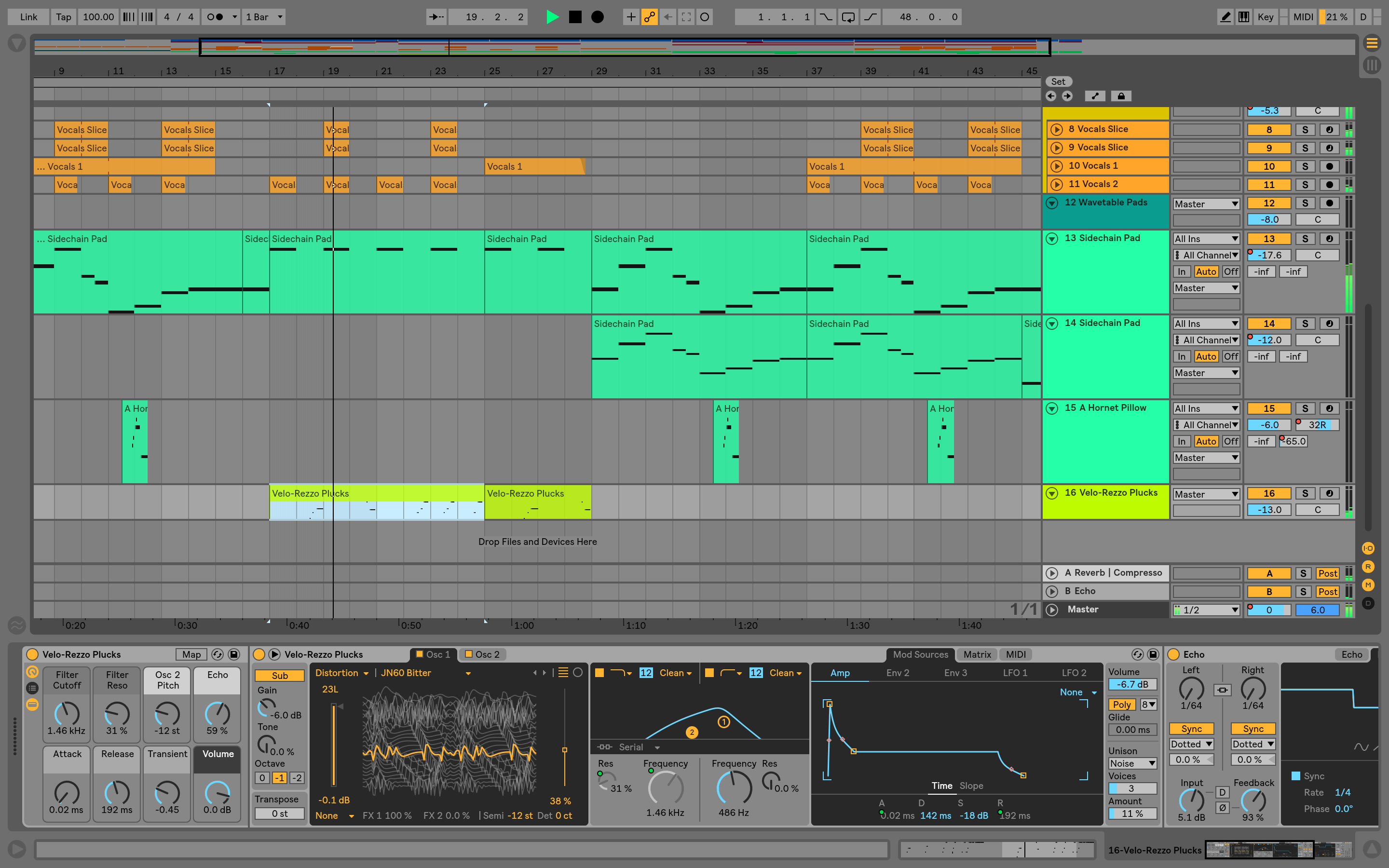
Among this list, Ableton Live stands out as the black sheep of the family. It isn’t DJ software, per se. Rather, it’s a DAW that’s frequently used for DJing. This hybrid lifestyle comes with its advantages and drawbacks. On the one hand, aspiring DJs probably shouldn’t learn the ropes using Ableton Live, as its interface and features differ from dedicated DJ software. However, those familiar with Ableton and DJing can find significant utility in what the program offers all around. For instance, Ableton Live features a master tempo feature that syncs all audio to a single tempo if commanded. Some find this a better solution than BPM matching. Also, since Ableton Live is first and foremost a DAW, recording, mixing, and editing become much simpler within the software. You can more easily create your own music as well and then bring it into a live DJ setting. In short, if you know what you’re doing and you’re confident enough to pull it off, Ableton Live can be a great asset and powerful DJing tool. Just keep in mind that the fully-featured Suite version runs about $749 USD. However, you can purchase used audio software on eBay at a fraction of the full cost.
Serato DJ Pro ($65-$299)
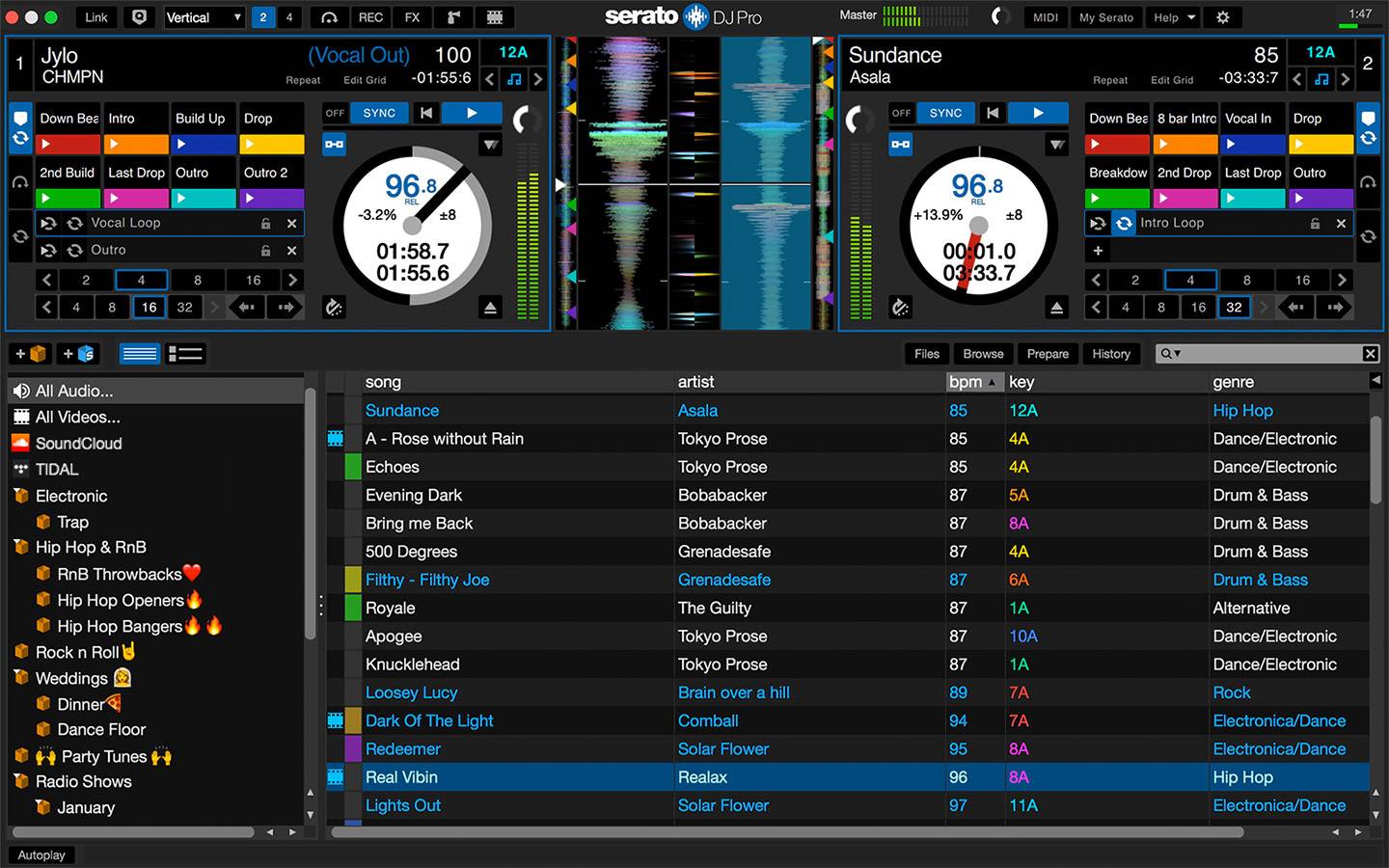
Earlier we touched on Serato DJ Lite and mentioned its bigger brother, Serato DJ Pro. As you might expect, the paid version does everything the free DJ software version does, but much more. A quick look at the Pro’s interface and you’ll notice some changes and additions compared to DJ Lite. For starters, you have access to 8 samples per set, a record feature, and virtual decks with detailed information on tempo and time. Serato DJ Pro assumes that you know what you’re doing and that you’re familiar with Serato’s ins and outs. Even if you’re not, the interface doesn’t make it too difficult to grasp where things are and what they do. The DJ Pro software itself is affordable at just $64.50 USD. But if you want everything Serato has to offer, including Serato Video, FX, and more, the Suite runs $299.
Rekordbox DJ by Pioneer DJ ($129)
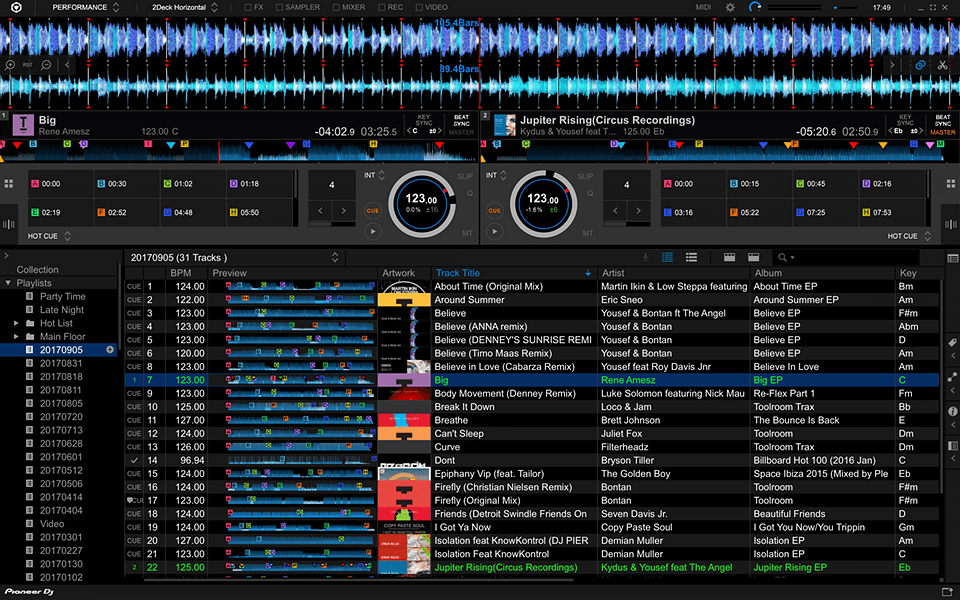
Pioneer DJ undoubtedly reigns supreme in the realm of DJ hardware. But it has the software to match. Rekordbox DJ claims it has the “lowest latency in the business.” No small feat, and especially important for live mixing. It’s also impressive considering how many features Pioneer DJ packed into their DJ software, including key shift, track suggestion, related track view, auto mix, and more. The program’s lighting mode makes light show integration simple, and its USB and smartphone compatibility gives users loads of freedom. On its site, Pioneer DJ even shows you which of its controllers are compatible with Rekordbox DJ (a lot). And since most professional DJs will end up purchasing Pioneer hardware, picking up its DJ software makes a lot of sense.
Conclusion
In the end, the best live DJs are defined by their creative choices, unique style, and spontaneity. Whatever hardware or DJ software you use, no particular music production laptop or program can determine these essential qualities; they only enhance them. In other words, if you aspire to become a DJ, learn the basics first, find your first DJ turntable (https://www.masteringbox.com/learn/first-dj-turntable), and become comfortable with your approach. As you improve, move on to more advanced DJ software and equipment. All the programs listed here will give you the tools you need to start DJing. Now, get spinning!
Informazioni sull'autore

Ethan Keeley
Scrittore, doppiatore, musicista e redattore audioEthan Keeley è un musicista, doppiatore e scrittore di Rochester, New York. Quando non è in tour con la sua band Unwill, lavora a nuove canzoni e storie.
Lascia un commento
Log in per commentare


